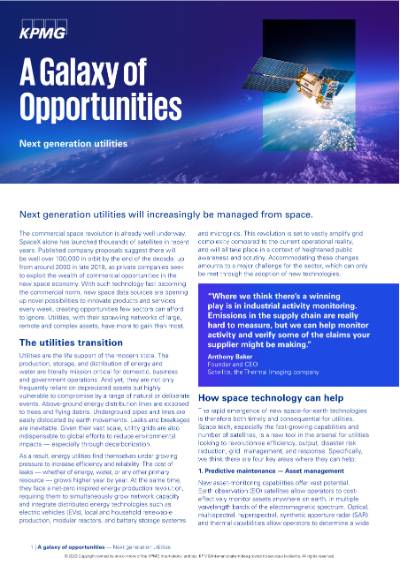Next generation utilities will increasingly be managed from space.
The commercial space revolution is already well underway. Published company proposals suggest there will be well over 100,000 in orbit by the end of the decade, up from around 2000 in late 2018, as private companies seek to exploit the wealth of commercial opportunities in the new space economy. With such technology fast becoming the commercial norm, new space data sources are opening up novel possibilities to innovate products and services every week, creating opportunities few sectors can afford to ignore. Utilities, with their sprawling networks of large, remote and complex assets, have more to gain than most.
Utilities are the life support of the modern state. The production, storage, and distribution of energy and water are literally mission critical for domestic, business and government operations. And yet, they are not only frequently reliant on depreciated assets but highly vulnerable to compromise by a range of natural or deliberate events. Above-ground energy distribution lines are exposed to trees and flying debris. Underground pipes and lines are easily dislocated by earth movements. Leaks and breakages are inevitable.
Given their vast scale, utility grids are also indispensable to global efforts to reduce environmental impacts — especially through decarbonization. As a result, energy utilities find themselves under growing pressure to increase efficiency and reliability. The cost of leaks — whether of energy, water, or any other primary resource — grows higher year by year. At the same time, they face a net-zero inspired energy production revolution, requiring them to simultaneously grow network capacity and integrate distributed energy technologies such as electric vehicles (EVs), local and household renewable production, modular reactors, and battery storage systems and microgrids. This revolution is set to vastly amplify grid complexity compared to the current operational reality, and will all take place in a context of heightened public awareness and scrutiny. Accommodating these changes amounts to a major challenge for the sector, which can only be met through the adoption of new technologies.






